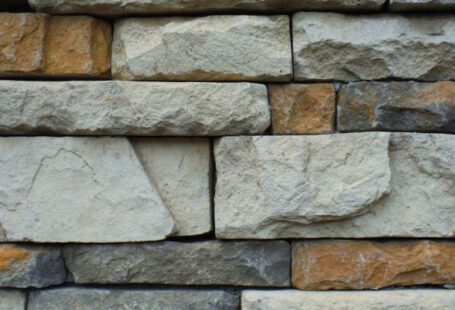When it comes to designing a pool that complements your house’s architecture, it’s essential to consider various factors to ensure a seamless integration between the two elements. A well-designed pool can enhance the overall aesthetic appeal of your property while also creating a harmonious flow between indoor and outdoor spaces. From selecting the right shape and materials to incorporating landscaping elements, there are several key considerations to keep in mind when planning the design of your pool. By taking these factors into account, you can create a stunning pool that perfectly complements your home’s architecture.
Consider the Architectural Style of Your Home
The first step in designing a pool that complements your house’s architecture is to consider the style of your home. Whether you have a modern, contemporary, traditional, or Mediterranean-style house, the pool design should reflect and enhance the existing architectural features. For example, if you have a sleek and minimalist modern home, a geometric pool with clean lines and a minimalist design would be a suitable choice. On the other hand, if your house has a more traditional or Mediterranean style, a freeform pool with natural stone accents and lush landscaping may be more appropriate.
Choose the Right Shape and Size
The shape and size of your pool are crucial factors that can greatly impact how well it complements your house’s architecture. The pool should be proportionate to the size of your outdoor space and should not overwhelm or overshadow the house itself. Consider the layout of your backyard and how the pool will fit into the overall design. Rectangular pools are a classic choice that works well with many architectural styles, while freeform pools offer a more organic and natural look. Additionally, consider how the pool shape will interact with the lines and angles of your house to create a cohesive and balanced design.
Select Materials that Coordinate with Your Home
The materials you choose for your pool can play a significant role in how well it complements your house’s architecture. Consider using materials that match or complement the exterior finishes of your home, such as stone, tile, or concrete that mimic the materials used in your house’s construction. Pay attention to the color palette as well, opting for hues that harmonize with the existing color scheme of your home. By selecting materials that coordinate with your house, you can create a unified look that ties the pool and the house together seamlessly.
Incorporate Landscaping Elements
Landscaping plays a crucial role in integrating the pool with your house’s architecture and creating a cohesive outdoor space. Consider planting trees, shrubs, and flowers that complement the style of your home and enhance the overall aesthetic of the pool area. Use landscaping to create visual interest, provide privacy, and frame the pool within the surrounding environment. Incorporating elements such as outdoor lighting, water features, and hardscaping can also enhance the design of the pool and create a welcoming and inviting outdoor oasis.
Create Functional Outdoor Living Spaces
To truly integrate the pool with your house’s architecture, create functional outdoor living spaces that connect the indoor and outdoor areas seamlessly. Design a poolside patio or deck that extends the living space outdoors and provides a place for lounging, dining, and entertaining. Consider adding features such as outdoor kitchens, seating areas, fire pits, and pergolas to enhance the usability and enjoyment of the outdoor space. By designing a pool that is surrounded by well-planned outdoor living areas, you can create a cohesive and harmonious environment that complements your house’s architecture.
Embrace Cohesive Design Principles
When designing a pool that complements your house’s architecture, it’s essential to embrace cohesive design principles that tie the two elements together. Pay attention to details such as symmetry, balance, scale, and proportion to create a harmonious relationship between the pool and the house. Choose furnishings, decor, and accessories that echo the style and aesthetic of your home to create a unified look. By approaching the design process with a cohesive vision in mind, you can create a pool that seamlessly integrates with your house’s architecture and enhances the overall appeal of your property.
Incorporate Sustainable and Eco-Friendly Features
Consider incorporating sustainable and eco-friendly features into the design of your pool to enhance its functionality and environmental impact. From energy-efficient pumps and filtration systems to solar heating and LED lighting, there are many ways to make your pool more eco-friendly. Additionally, consider using natural and environmentally friendly materials in the construction of the pool and surrounding landscape to reduce the overall ecological footprint. By prioritizing sustainability in the design of your pool, you can create a beautiful and environmentally conscious outdoor space that complements your house’s architecture.
Create a Seamless Transition Between Indoor and Outdoor Spaces
One of the key goals of designing a pool that complements your house’s architecture is to create a seamless transition between indoor and outdoor spaces. Consider ways to blur the boundaries between the interior and exterior areas, such as using large sliding glass doors, expansive windows, and strategically placed openings that provide views of the pool from inside the house. Connect indoor living areas to outdoor spaces with pathways, decks, and landscaping features that invite residents and guests to move freely between the two areas. By designing a pool that fosters a strong connection between indoor and outdoor spaces, you can create a cohesive and integrated environment that enhances the overall livability of your home.
Designing a pool that complements your house’s architecture requires careful planning, attention to detail, and a cohesive design approach. By considering the architectural style of your home, selecting the right shape and materials, incorporating landscaping elements, and creating functional outdoor living spaces, you can create a stunning pool that seamlessly integrates with your house. Embrace sustainable design principles, prioritize eco-friendly features, and focus on creating a seamless transition between indoor and outdoor spaces to enhance the overall aesthetic appeal and functionality of your property. With thoughtful design choices and a cohesive vision, you can create a pool that not only complements your house’s architecture but also enhances the beauty and enjoyment of your outdoor living space.





